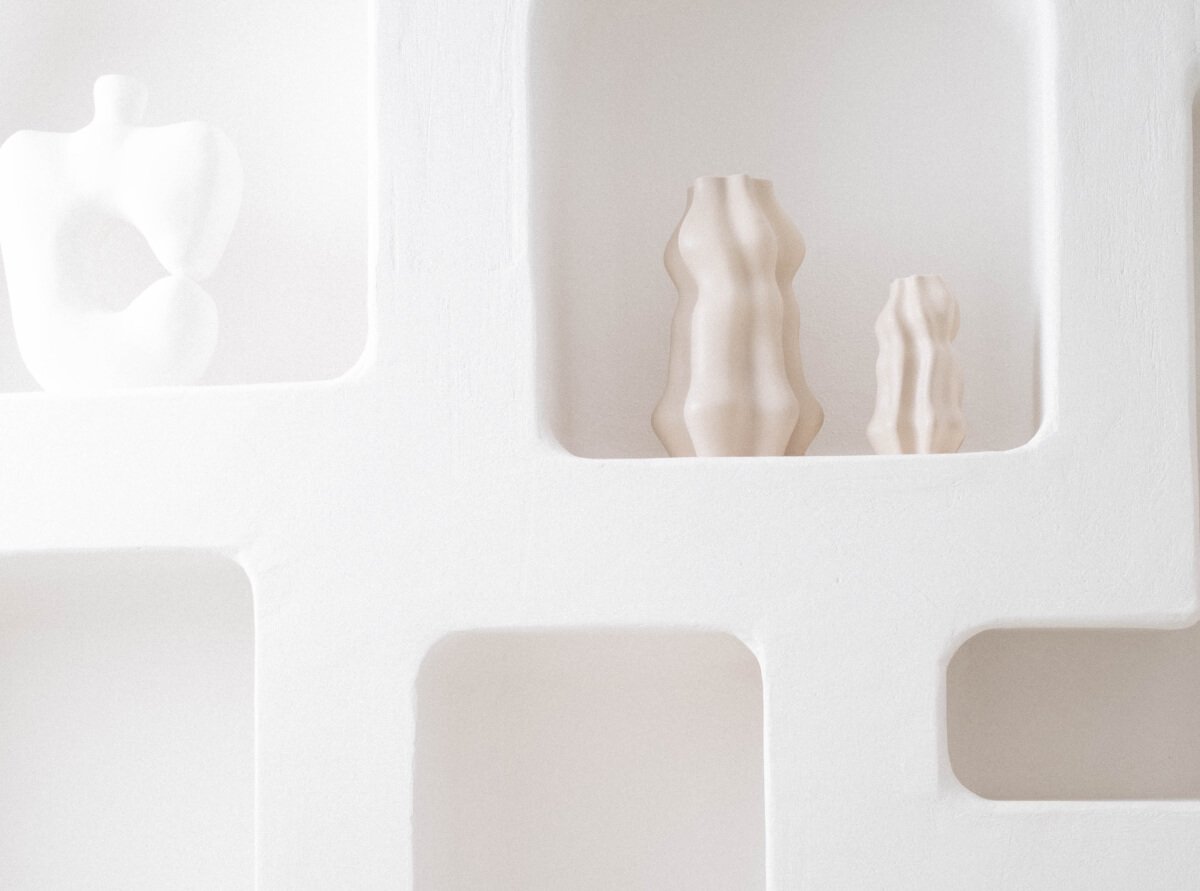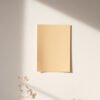
Kitchenware Care Tips
Whether you’re carefully selecting eco-friendly kitchenware or using it everyday, proper care is essential to maintain its optimal condition and extend its lifespan. Different materials have different characteristics, requiring different care methods. Improper cleaning methods can damage the coating, while improper storage habits can cause rust and warping. Today, we’ve compiled a comprehensive “Guide to Care for All-Material Kitchenware,” providing comprehensive guidance on cleaning, maintenance, and storage, ensuring the long-lasting durability of each piece of equipment and safeguarding your kitchen life.
1. Bamboo Kitchenware Care: Preventing Cracks and Mold, Preserving Its Natural Texture
Bamboo kitchenware (such as spatulas, spoons, and cutting boards) is natural and environmentally friendly, but bamboo absorbs water easily. If not properly cared for, it can easily crack and mold. Mastering these key care tips will help keep your bamboo kitchenware looking like new for 3-5 years. 1. First Use: “Opening the Cooker” Maintenance to Enhance Durability
For newly purchased bamboo cookware, rinse it thoroughly with clean water. Then, prepare a basin of warm water and add a small amount of salt (10g salt to 500ml water). Stir until the salt dissolves, then soak the bamboo in the water for 2 hours. The salt water disinfects and sterilizes the bamboo, allowing it to absorb moisture, reducing the risk of cracking during subsequent use. After soaking, remove the bamboo and wipe it dry with a clean cloth. Then, apply a thin layer of cooking oil (such as olive oil or rapeseed oil) evenly to the surface. Let it sit for 12 hours to allow the oil to penetrate and form a protective film that prevents sticking and enhances the bamboo’s water resistance.
2. Daily Cleaning: Avoid prolonged soaking and dry promptly.
After each use, gently wipe with warm water and a mild detergent to remove any grease and food residue. Avoid scrubbing with steel wool or a hard-bristled brush, as this can scratch the bamboo surface, damage the protective film, and encourage bacterial growth. After cleaning, be sure to thoroughly dry the surface with a dry cloth, especially around the crevices and handle joints of the cookware. These areas are prone to moisture retention, and prolonged moisture can cause mold. If stubborn stains (such as soy sauce stains or meat odors) remain on the bamboo cutting board, wipe the surface with a lemon slice. The acid in lemon breaks down stains and removes odors. Rinse with warm water and wipe dry.
3. Daily Maintenance: Oil regularly and avoid direct sunlight.
Perform a weekly “deep conditioning” on bamboo cookware: Wipe the surface clean with a dry cloth and evenly apply a thin layer of oil (not too much, just a light coat). Let it sit for two hours to absorb, then wipe off any excess with a clean cloth. This will replenish lost moisture and oils in the bamboo and prevent cracking. When storing bamboo cookware, keep it in a well-ventilated, dry place, away from direct sunlight or near heat sources (such as stoves and ovens). Direct sunlight can cause the bamboo to lose moisture quickly, leading to cracking and deformation. Exposed heat can accelerate aging and shorten its lifespan. If not used for an extended period, wipe dry, apply a thin layer of oil, seal in a plastic bag, and store in a cool, dry place.
2. Non-stick Pan Care: Prevent the Coating from Peeling and Extend its Life
The core of a non-stick pan (such as a 316 medical-grade non-stick pan or ceramic non-stick pan) is its non-stick coating. Once the coating is damaged or peels off, it not only loses its non-stick properties but can also release harmful substances that could affect your health. Proper care will keep the coating intact and provide peace of mind.
1. First Use: Remove the Protective Film and Preheat on Low Heat
New non-stick pans are factory-installed with a protective film (usually paraffin or grease). Before first use, clean them with warm water and neutral detergent to remove the protective film, then wipe dry with a dry cloth. Before use, preheat the pan on the stovetop over low heat for 1-2 minutes (do not use high heat directly) to allow the pan to heat evenly. Add cooking oil or ingredients to the pan to avoid direct contact with high temperatures, which could cause uneven heating and peeling of the coating. 2. Daily Use: Choose the Right Tools and Control the Heat
When using a nonstick pan, always use a silicone, wooden, or nylon spatula. Never use an iron or steel spatula or steel wool. These hard tools can scratch the nonstick coating and cause it to peel. When cooking, use medium-low heat as much as possible. Avoid high heat. High heat can overheat the pan (exceeding the coating’s rated temperature, typically between 230-260°C), causing the coating to age, discolor, and peel. After cooking, do not rinse a hot pan with cold water immediately. The sudden contact of a hot pan with cold water can cause the coating to crack due to thermal expansion and contraction. Allow the pan to cool to room temperature before rinsing with warm water.
3. Daily Cleaning: Use gentle cleaning techniques, avoiding scratches with hard objects.
To clean, use a sponge or soft cloth dampened with warm water and neutral detergent. Gently wipe the inside and bottom of the pan to remove any grease or dirt. Avoid using steel wool, a hard-bristled brush, or scouring powder, as these can damage the coating. If there are burnt food residues on the bottom of the pot, don’t use a spatula or steel wool. Instead, pour some warm water into the pot and soak for 10-15 minutes. Once softened, gently wipe with a sponge to remove them. When storing, avoid stacking other pots or heavy objects inside the pot to prevent deformation and peeling of the coating. Place a sheet of kitchen paper inside the pot before stacking other pots, or hang them up individually for storage to prevent damage.
3. Stainless Steel Cookware Care: Prevent Rust, Remove Stains, and Maintain a Bright Finish
Stainless steel cookware (such as pots, straws, and knives) is durable and easy to clean, but improper care can lead to rust, water stains, and oil residue, affecting its appearance and usability. Master these tips to keep your stainless steel cookware looking like new. 1. Daily Cleaning: Promptly Clean and Remove Water Stains
After each use, rinse immediately with warm water to prevent food residue from remaining on the surface. This is especially true for foods containing salt or acid (such as tomatoes, soy sauce, and pickles). These ingredients react chemically with stainless steel, causing rust or stains. For cleaning, use a sponge or soft cloth with a neutral detergent. For stubborn grease stains (such as burn marks on the bottom of a pot), apply baking soda to the stain and let it sit for 5 minutes before wiping with warm water. Baking soda is alkaline and effectively breaks down grease without scratching the stainless steel surface. After cleaning, wipe dry with a dry cloth, especially around corners and crevices to prevent residual moisture from forming stains that affect the appearance. 2. Rust and Stain Removal: Safe and Effective with Natural Materials
If stainless steel cookware has minor rust or spots, you can clean it with potato peels. Place the inside (starchy side) of a potato peel against the rusted area and gently rub. The starch and acid in the potato will break down the rust. Rinse with warm water and wipe dry. For more severe rust, soak it in white vinegar. Pour enough vinegar to cover the rusted area and soak for 30 minutes. The acid in the vinegar will dissolve the rust. Then, wipe it with a sponge, rinse thoroughly, and dry. For stains on the inside of stainless steel straws, use a dedicated straw brush. Dip it in warm water and dishwashing liquid and gently scrub the inside of the straw back and forth to ensure it is clean and prevent bacterial growth.
3. Daily Maintenance: Avoid impact and keep away from acidic and alkaline materials.
When storing stainless steel cookware, avoid contact with other hard objects to prevent scratches. Scratches can easily retain oil and moisture, leading to rust. Avoid soaking stainless steel cookware in acidic or alkaline solutions (such as vinegar or baking soda) for extended periods. These solutions corrode the stainless steel surface, destroying the protective layer and causing rust. If the bottom of a stainless steel pot becomes “blackened” (an oxide layer caused by prolonged high-temperature heating), gently rub the bottom with a steel wool dipped in a small amount of toothpaste. The abrasive in the toothpaste will remove the oxide layer and restore the pot’s shine. However, be careful not to use the steel wool to rub the inside of the pot to avoid scratching it.
IV. Ceramic Cookware Care: Protect It from Drops and Cracks to Keep It in Good Condition
Ceramic cookware (such as ceramic food containers, bowls, and knives) is aesthetically pleasing and safe, but it is also brittle and prone to breaking or cracking. During daily care, pay special attention to preventing impacts and extreme temperature fluctuations.
1. Daily Use: Avoid Extreme Temperature Fluctuations to Prevent Cracking
Although ceramic cookware (especially borosilicate ceramic) is highly resistant to temperature fluctuations, it should still be protected from sudden temperature changes. For example, don’t microwave ceramic containers straight from the freezer. Instead, let them sit at room temperature for 10-15 minutes to allow the temperature to gradually warm up before reheating. Sudden high temperatures can cause stress within the ceramic, leading to cracking. Don’t place ceramic cookware directly on a cold countertop after taking it out of the microwave or oven. Place a heat-insulating mat under it to prevent the cold surface from causing cracking.
2. Daily Cleaning: Gentle Cleaning, Avoid Impact
When cleaning ceramic cookware, use warm water and a neutral detergent. Gently wipe with a sponge or soft cloth. Avoid using steel wool or a hard-bristled brush, as these can scratch the surface and affect its appearance. If there are stubborn stains on ceramic bowls (such as rice grains or oil stains), soak them in warm water for 5 minutes to soften before washing. When cleaning, avoid colliding ceramic cookware with other hard objects (such as stainless steel pots and glass bowls). This is especially true for ceramic knives, as their blades are brittle and can easily chip or break.
3. Storage: Store Ceramic Cookware Separately to Avoid Crushing
When storing ceramic cookware, place it individually on the lower shelf of a cabinet or in a dedicated storage box. Avoid stacking it with heavy objects, which can cause cracking. Ceramic bowls and ceramic food containers can be stacked, but place a piece of kitchen paper or soft cloth between them to reduce friction and prevent scratches. Ceramic knives should be stored in a dedicated knife block or sheath, away from other knives, to avoid damage to the blade and accidental injury to fingers. Even if fine cracks do not affect the use of ceramic cookware, it is recommended not to use it, especially when used to hold food. Cracks can easily harbor bacteria, making them difficult to clean and potentially harmful to health.
5. Care for Glass Cookware: Prevent Scratches and Shatters, Maintain Transparency
Glass cookware (such as glass straws, glass food containers, and glass baking trays) is transparent, beautiful, safe, and non-toxic, but it is easily scratched and broken. Care should be taken to prevent scratches and shatters. 1. Daily Use: Avoid scratches with hard objects to prevent scratches
Although glass surfaces are hard, they are easily scratched by hard objects, especially glass straws and glass food containers. Avoid using steel wool or hard-bristled brushes when cleaning. Use a sponge or soft cloth to avoid scratches. When using glass bakeware, avoid direct contact with metal grills or the inside of the oven to prevent breakage. Place a piece of baking paper under the baking tray to prevent sticking and reduce friction with the grill.
2. Daily Cleaning: Clean promptly to remove scale
After each use, rinse glass cookware with warm water to prevent food residue from drying on the surface, making it difficult to clean. If there is scale on the glass surface (such as scale on the inside of a glass kettle or glass straw), soak it in white vinegar: Pour an appropriate amount of white vinegar and soak for 20 minutes. The scale will dissolve, then rinse with clean water. If there are grease stains on glass food containers, apply baking soda to the affected area, let it sit for 5 minutes, and then wipe with warm water to easily remove the grease.
3. Storage: Protect from impact and sunlight
When storing glass kitchenware, place it on a stable surface to avoid impact or dropping. This is especially true for glass straws and bowls, which are thin and easily shattered. Avoid exposing glass kitchenware to direct sunlight. Prolonged exposure to sunlight will age the glass, weakening its strength and making it more susceptible to shattering. When stacking glass food containers, place a soft cloth between them to prevent the lids from colliding with the container, potentially damaging the lids or scratching the container.
Conclusion: Careful care ensures long-lasting companionship
Every piece of kitchenware is a valuable addition to your kitchen life. Whether it’s eco-friendly bamboo or stainless steel, or common non-stick pans or ceramic cookware, careful care is crucial to maintaining optimal performance, extending its lifespan, and reducing the waste of resources associated with frequent replacement. In reality, caring for your kitchenware isn’t complicated; it just requires a bit of patience and care. Clean and dry your utensils promptly after each use, choose the appropriate cleaning tools and methods based on their material characteristics, and protect them from impact and moisture during storage.
Seeing your carefully cared-for kitchenware still looking its best and feeling its best not only makes cooking more enjoyable but also demonstrates a commitment to eco-friendly living. Extending the life of your utensils means reducing resource consumption and putting less strain on the planet. Starting today, try these care tips to pamper your utensils, ensuring they last longer and contribute to a better kitchen life.



